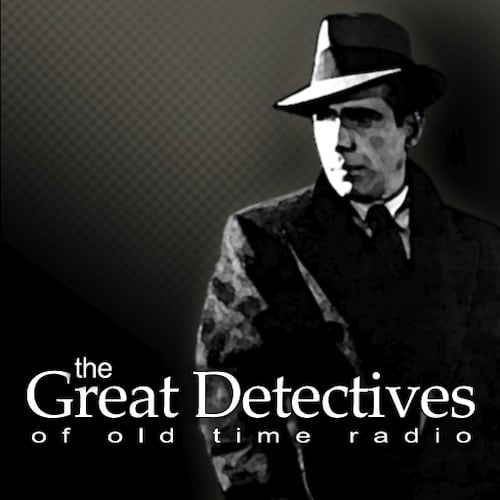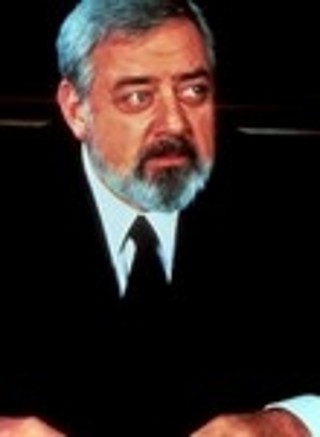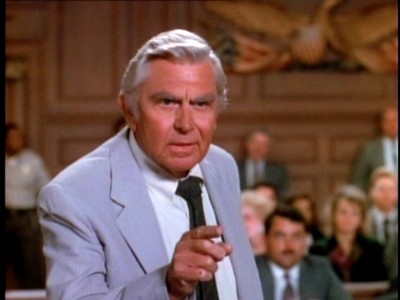
Previous in this series: Perry Mason and Ben Matlock, Batman, Hardy Boys, Nancy Drew, and Tom Swift , Sherlock Holmes, and Encyclopedia Brown.
“The story you are about to see is a fib, but it’s short. The names are made up, but the problems are real.”
With these words began one of my earliest mystery series, Mathnet.
Mathnet began as just one sketch on the series, Square One, a PBS educational program designed to teach kids about Math. Other sketches included “Mathman”, the animated adventures of “Dirk Niblick of the Math Brigrade” among others. Infrequent parodies included a couple of Honeymooners parody sketches. Each sketch, song, or story had the goal of teaching about math in an entertaining way.
Mathnet was its Dragnet-style sketch starring Beverly Leech as Kate Monday and Joe Howard as her partner George Frankly. They were crime-solving mathematicians who demonstrated a wide variety of math concepts in solving crimes.
The initial episode of Mathnet, The Case of the Missing Baseball was more parody than anything else with the cameramen playing off of Dragnet’s use of close ups to show a series of rapid close-ups in part one of the Missing Baseball. The show couldn’t keep that up forever, so it became much of a homage with comic and educational overtones. The show also changed from its pilot episode in which the two mathematicians weren’t part of the police force, even though they acted like it until they got the criminal.
Leech turned in a solid straight man performance as Officer Monday, but Howard was the one who shined as the goofy, but usually competent partner. Like Ben Alexander (Frank Smith) and Harry Morgan (Bill Gannon), Howard brought comic relief to the cases with dialogue like this when Kate announces they’ve received a call about a missing autographed baseball:
George: I love baseball, Kate. Martha and I we went to Dodger Stadium last night, Kate.
Kate: The Dodgers played in Cincinatti last night, George
George: Yep. No trouble parking. You ought to go with us. Martha and Me to a Dodger game. No trouble parking.
In another episode, Kate Monday asked an apprehended criminal, “Do you agree that crime doesn’t pay?”
He responded, “Yeah, at least not the way I do it.”
The show’s comedy worked. Then, it was merely funny. Today, I see some of the way it copies Dragnet’s success.
The show played homage to Dragnet in other ways that a kid under 10 who hadn’t seen Dragnet wouldn’t have caught on. James Earl Jones appeared as Chief of Detectives Thad Green. In the original Dragnet, the Chief of Detectives was Thad Brown.
The program was cleverly educational, working math tricks such as estimating, calculating the angle of refraction, basic geometry, probability, depreciation, and the effective use of databases and spreadsheets seemlessly into the plot. While Mathnet didn’t provide a comprehensive math education, it taught some great math principles.
For kids, the program also provided solidly plotted mysteries with some fascinating conclusions. The stories were told as five-part serials that would end each episode of Square One and give kids a reason to tune in tomorrow. Mathnet began as just one sketch of many, it’s first serial averaging about 6 minutes of air time per show. However, due to its popularity, Mathnet took up an ever-increasing share of Square’s One time.
In the middle of the second season, the show was packed up and moved to New York where other Children’s Television Workshop Shows were based. Their first case in New York, The Case of the Swami Scam aired as a standalone TV movie. In subsequent seasons, Leech was replaced by Toni Di Buono as Pat Tuesday. But by then I was in an area where we didn’t get PBS.
I remember Mathnet fondly for two reasons. First, it along with the entire show, Square One was successful at making math fun. There are math tricks I use today that I learned from Mathnet and I wasn’t the only one. A reviewer on IMDB notes:
In 6th grade in 1997, on Fridays we would watch Mathnet. It was always fun but plenty educational! As a student math was always the easiest when it was made fun, and that is exactly what this movie did for us. Quite frankly, the Mathnet series actually inspired my class to do our homework, because we weren’t allowed to watch it unless the whole class did their homework. It was always a treat when we got to watch these movies. There aren’t many good math movies (as I know now because I am studying mathematics)so it is amazing that Mathnet is so interesting. When the teacher who used them retired, he took the tapes with him and now Indiana is Mathnetless which it a pity!
If only educational TV was always that effective. It also helped spur a lifelong interest in Dragnet. When I got older, my love of Mathnet fueled my love of Dragnet and the rest, as they say, is history.
Mathnet with its blend of great comedy, solid math skills, and some great fun with classic mysteries, still brings a smile to my face. My only regret is that the show has not been given its due with a DVD release.
If you enjoyed this post, you can have new posts about Detective stories and the golden age of radio and television delivered automatically to your Kindle.


 When I was growing up, lawyer shows were a regular part of our family TV viewing. My dad would rarely let us watch cop shows like Dragnet when we were young, but lawyer shows were another story. Indeed, one day when we were fasting from TV, he made an exception for Perry Mason because “it taught good morals.”
When I was growing up, lawyer shows were a regular part of our family TV viewing. My dad would rarely let us watch cop shows like Dragnet when we were young, but lawyer shows were another story. Indeed, one day when we were fasting from TV, he made an exception for Perry Mason because “it taught good morals.”